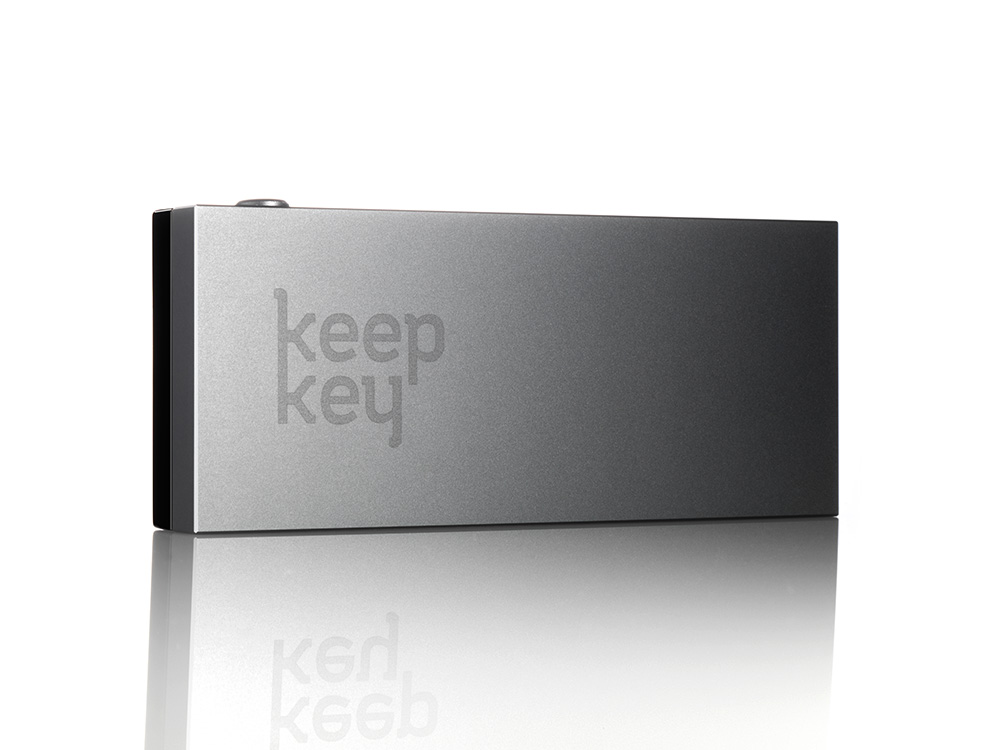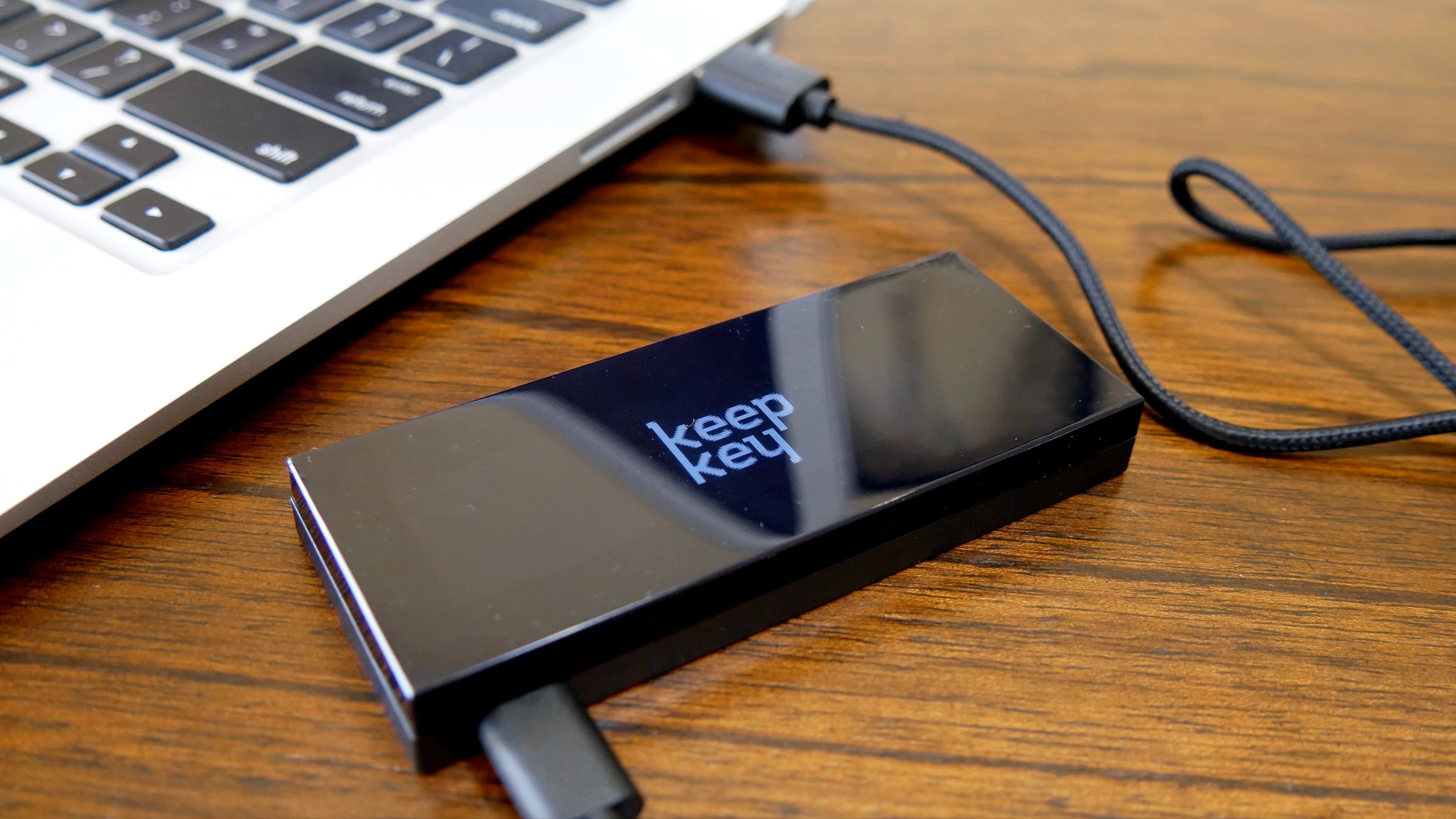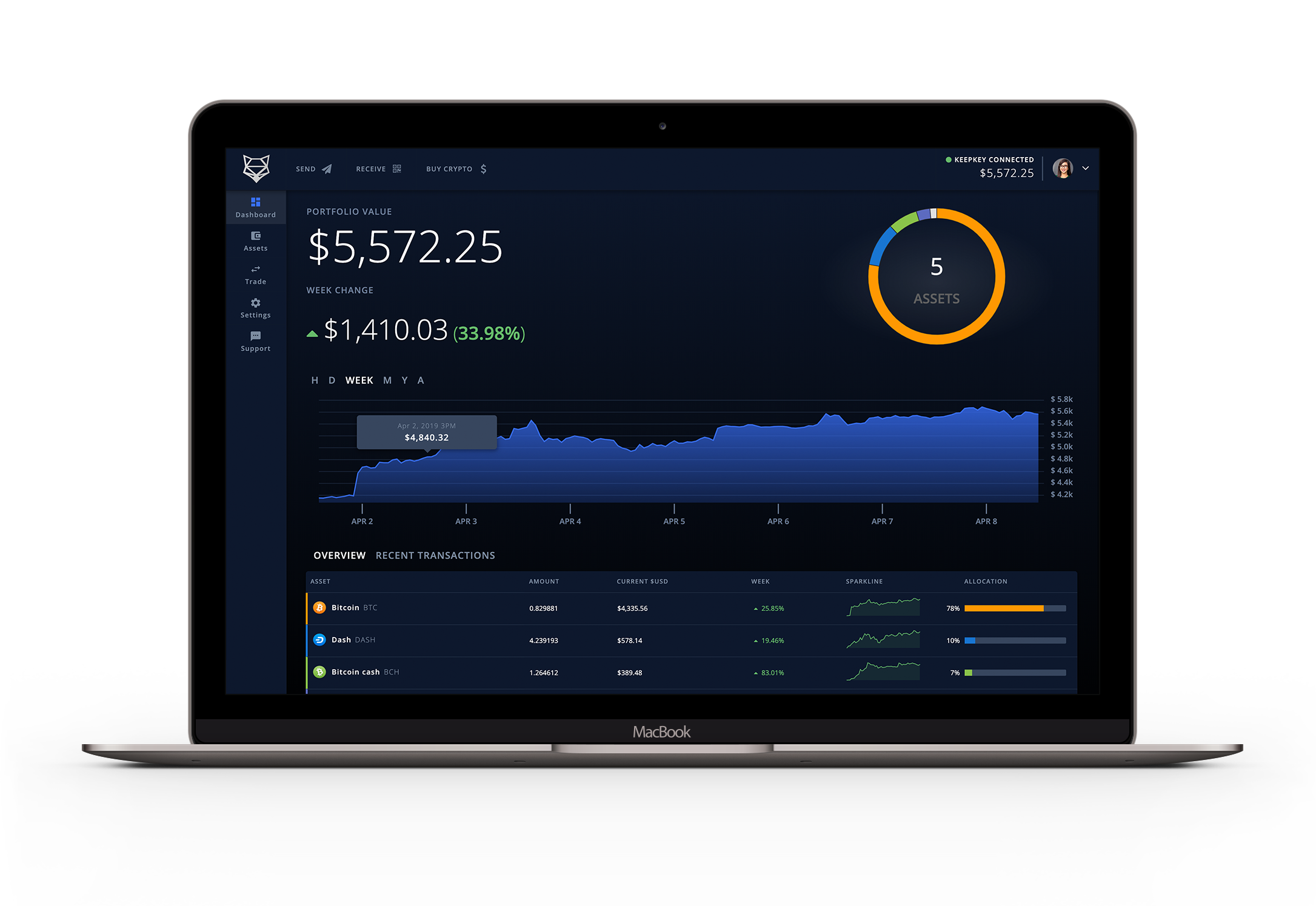Understanding The Blockchain Technology
Dubbed “The Internet 3.0”, Blockchain
can be described as a continuously growing list of digital records, called blocks,
which are linked and secured using cryptography. Typically, each block contains
a cryptographic hash of the previous block, a transaction timestamp and
transaction data.
This structure makes Blockchain a public ledger of information, collected through a network that sits on top of the internet. It is an entirely novel way of documenting data on the internet, which can be used to develop Blockchain applications, such as games, messengers, social networks, storage platforms, voting systems, online shops, exchanges and prediction markets amongst other emerging application ideas.
This structure makes Blockchain a public ledger of information, collected through a network that sits on top of the internet. It is an entirely novel way of documenting data on the internet, which can be used to develop Blockchain applications, such as games, messengers, social networks, storage platforms, voting systems, online shops, exchanges and prediction markets amongst other emerging application ideas.
By design, a Blockchain is
inherently resistant to modification of the approved transaction data between
two parties efficiently, ensuring the distributed ledger is constantly in a verifiable
and permanent state. The entire framework is typically managed by peer-to-peer
network collectively adhering to protocol for inter-node communication and
validation of new blocks.
A Brief History of
Blockchain Technology
The idea for a cryptographically
secured chain of blocks was first described in 1991 by W.Scott Stornetta and
Stuart Haber. Merkle trees was later incorporated into the design in 1992,
which improved efficiency and allowed several documents to be collected into
one block.
A conceptualized idea for
Blockchain however, came from the elusive and brilliant Japanese programmer
known as Satoshi Nakamoto in his 2008 whitepaper as a core component of the
cryptocurrency Bitcoin, where it serves as the public ledger for all
transactions on the network. Using Blockchain, Bitcoin became the first digital
currency to solve the double-spending
problem, without requiring a trusted authority.
In the Blockchain community however, there is a general belief that Nakamoto is not Japanese at all, probably due to the mastered documentation of Bitcoin in English, leading many people to believe he may be either European or North American descent. Nakamoto has made the Bitcoin network so transparent, anyone can view his holding currently estimated to be 1 million Bitcoins.
Key Attributes of Distributed Ledgers
The digital distributed ledger
network of Blockchain consists of 3 key attributes;
1.Recorded:
stored information which is time-stamped
2.Transparent:
anyone in the world with required knowledge can see the ledger of transactions
3.Decentralized:
the ledger exists on multiple computers in the world, often referred to as
nodes.
The Bitcoin Blockchain files
size in August 2014 was recorded containing transactions reaching 20GB, growing
to almost 30GB in 2016 and from January 2017, the Bitcoin Blockchain more than
doubled to 100GB in size.
Money and exchange of value
has been a human concept dating back more than 7000 years. Many currency forms
have existed and phased out around the world like Cowries, leather and even
during the ancient times of 9000 BC when the batter trade was practiced,
exchanging cattle, sheep and camels as forms of payment before modern coinage,
paper and internet banking emerged.
According to experts on
worldwide growth predictions, Blockchain technology is forecast to reach $7.74
billion by 2024, with majority of the future growth in the financial services
sector.
Structural Components and Terminologies of Blockchain
At this point, it's a good
idea to delve into some components that make up the structure of Blockchain, and
some terminologies that underpin the idea of building such an open digital cryptographic
ledger.
1. Decentralization
On top of the list of prime
ideas fueling the development and adoption of Blockchain technology along with
cryptocurrencies, is the ability to store valuable information about
transactions, money, intellectual properties and even digital applications on
multiple locations in the world, instead of a central point location where
access could be controlled by powerful central authorities. This ensures
control is handed back to individual users over their creative properties.
A lack of central control point
makes the system fairer to everyone and considerably more secure, since
altering any data in the chain will require consensus from a large percentage
of participants across the network of nodes, to validate transactions and
record data in a manner that is incorruptible.
2. Nodes
A node is any active
electronic device, including a computer, smart phone or even a printer
connected to the internet and having a valid IP address. The primary role of a
node is to support and maintain a copy of the Blockchain and, in some cases
process transactions. Nodes are usually arranged in the structure of trees,
known as Binary Trees. Cryptocurrencies for example each have their own nodes,
to maintain transaction records of particular tokens.
Owners of nodes are willing
participants, contributing their computing resources such as CPU, RAM and
graphics processing units (GPU), to store, solve mathematical problems and
validate transactions in the Blockchain network. Transaction fees can be earned
as a reward for performing the task in a process that is now known as mining or
forging, albeit heavy costs in electricity to run high powered systems.

Every node in a decentralized
system has a copy of the Blockchain, with data quality maintained by massive
database replication and computational trust.
3. Blocks
Blocks hold batches of valid
transactions that are hashed and encoded into a Merkle tree. Each linking block
contains a cryptographic hash of the previous block to form a chain. This
iterative process confirms the integrity of previous blocks all the way back to
the genesis block.
On the 3rd January
2009, Satoshi Nakamoto mined the first genesis block into existence,
containing the first 50 BTC block reward and cannot be spent by anyone. The
original Satoshi Bitcoin software was released on web-based open source
platform Sourceforge and written in C++ programming language.
The genesis block also
included text from the UK Times newspaper, saying “03/Jan/2009 Chancellor on
brink of second bailout for banks”, a reference to the birth-date of the
technology and possibly a dig at the fractional reserve banking system. Satoshi’s
creation however limited the number of Bitcoins in circulation from exceeding
21 million BTC.
4. Consensus Protocol
Blockchain consensus protocol
is used to keep all nodes on a network in a synchronized state with each other.
It’s a system for answering the question “How do we all make sure we agree on
the truth?”
The protocol is crucial to the
Blockchain technology, by performing two key functions; firstly, responsible
for updating the Blockchain network with new transaction information, while keeping
participants incentivized, and secondly it prevents any single entity from
controlling and derailing the entire Blockchain system.
This technology in a
sense makes the Blockchain network a self-auditing ecosystem, making it
extremely difficult to replicate or tamper with the network without heavy
investment of time, computing resources and an extremely high costs in
electricity.
5. Hashing
A cornerstone of the Blockchain
technology is rooted in the integrity and reliability of information on the
chain from tampering, insertion of fraudulent data or preventing double
spending. This handicap is addressed using the process of hashing, where an
input of data is turned into cryptographic fixed outputs through mathematical algorithms.
Bitcoin for example uses the
SHA-256 cryptographic hashing, that includes a short piece of message or a huge
cache of varying pieces of information in transaction blocks.
Hashing drastically increases
the integrity and security of data, preventing anyone trying to decrypt the
information without knowledge of the length of the hash function, impossible. Tampering
with any of the input data completely alters the hash and is rejected by the Blockchain.
A Merkle trees algorithm is
used in Blockchain to provide integrity, security and irrefutability. The hash
of the Merkle root is normally contained in the block header along with a hash
of the previous block, timestamp, nonce, the block version number and the
current difficulty target for the math challenge.
6. Proof-of-work (PoW)
The consensus protocol
introduced by Bitcoin and used by many other cryptocurrencies, is the process
widely known as mining. The Proof of work occurs on nodes in the network,
requiring a considerable amount of work to solve complex mathematical problems,
and the answer verified as accurate by other participating nodes on the
Blockchain.
The process itself involves solving
computational puzzles and presenting the answers on a trial and error basis.
The answer required for approval into the Blockchain needs to be lower or equal
to the hash of the block, known as the ‘target hash’
A target hash is a number that
the header of a hashed block must be lesser than or equal to, for a new block to
be created. A lower target is usually more difficult to compute and generate a
block as miners have to continue testing different unique values known as nonce
until a suitable result is produced. The miner that solves the riddle gets
rewarded with mining the next block as well as receiving the transaction fees
for their work.
7. Proof-of-Stake (PoS)
Proof-of-stake is similar to
proof-of-work except preference of miners with more coins in their wallet along
with how old those coins have been held there for. Essentially awarding the
proof-of-work task to nodes that contain the most aged coins on the network to
mine the next block.
PoS seeks to address the issue
of the amount of power required to mine a block; as documented in 2015, it was
estimated that one Bitcoin transaction required electricity that could power
1.57 American households per day. Instead of using high amounts of energy to
solve a PoW puzzle, a PoS miner is limited to mining a percentage of
transactions that is reflective of their ownership stake. For example, a miner
who owns 3% of the Bitcoin available can in theory mine only 3% of the blocks.
8. Byzantine Fault Tolerance
The ‘Byzantine Generals’ Problem’
states that, no two computers on a decentralized network can entirely and
irrefutably guarantee that they are displaying the same data. If the transmission
network is unreliable, the computers cannot be sure the data communicated has
arrived.
Byzantine Fault Tolerance is
therefore a consensus protocol, ensuring two nodes communicate safely across a
network, knowing that they are displaying the same data.
9. Smart Contracts
Blockchain-based smart
contracts can be partially or fully executed or enforced without any human
interaction. One of the main objectives of a smart contract is automated
escrow, which the IMF believe smart contracts based on Blockchain technology
could optimize the use of contracts in general and reduce moral hazards. The
legal status for a Smart Contract is however unclear due to the lack of
widespread use.
Blockchain implementations
could enable the coding of contracts that will execute when specific conditions
are met. A Blockchain smart contract would be enabled by extensible programming
instructions that define and execute an agreement. For instance, Ethereum
Solidity is an open-source Blockchain project that was built specifically to
realize this possibility. by implementing a Turing-complete programming language
capability virtual machine (EVM) to implement such contracts.
Available
Types of Blockchain Technology
Currently, three types of
Blockchain networks exist; Private, public and Consortium Blockchains.
1.
Private Blockchains – These are permissioned networks that can
only be joined after an invitation from network administrators. Participant and
validator access is restricted, and can be considered a middle-ground for
companies that are interested in the technology, but not comfortable with the
level of control offered by public networks.
Companies will typically seek
to incorporate Blockchain into their accounting and record-keeping procedures,
without sacrificing autonomy and running the risk of exposing sensitive personal
data to the public internet.

2.
Public Blockchains – These type has absolutely no access
restrictions, where anyone with an internet connection can send transactions
data to the network, as well as become a validator. This means anyone with the
required programming knowledge, can participate in the execution of a consensus
protocol.
Such networks usually offer
economic incentives for those who secure them and utilize some type of a
Proof-of-Stake or Proof-of-Work algorithm. Some of the largest publicly known
Blockchains include Bitcoin and Ethereum.
3.
Consortium Blockchains – These can be described as
semi-decentralized, in the sense that it is permissioned. Instead of a single
organization controlling it, a number of organizations might each operate a
node on such a network. The administrators of a consortium chain restrict users’
reading rights as they see fit, and only allow a limited set of trusted nodes
to execute a consensus protocol.
Practical
Applications of Blockchain Technology
As with most innovative
technologies like Artificial Intelligence and Augmented Reality, Blockchain
technology falls under the disruptive technology category, and can be used to
create a permanent, public, transparent ledger system for compiling data on
sales, storing rights data by authenticating copyright registration, and
tracking digital use and payments to content creators, such as musicians and
video production professionals.
Below are some world use
examples of Blockchain technology;
1. In
2017, IBM partnered with ASCAP and PRS for Music to adopt Blockchain in music
distribution.
2. Imogen
Heap’s Mycelia service, which allows managers to use Blockchain to track
high-value items moving through a supply chain, was launched in July 2016.
3. Kodak
in 2018 announced plans to launch a digital token system for photographs and
copyright recording.
4. Smart
contracts used in the music industry now means, every time a DJ mix is played,
the smart contracts attached to the dj mix instantly executes and pays the creative
artist of the music.
5. With
rising concerns about information and cybersecurity, an application has been
suggested for securing the spectrum sharing for wireless networks.
6. The
insurance industry is seeing a huge shake-up with the introduction of new
distribution methods like peer-to-peer insurance, micro-insurance and
parametric insurance following the adoption of Blockchain.
7. The
sharing economy and IoT are also benefiting from Blockchain because they
involve many collaborations of peers. The IOTA Project aims to extend the Blockchain framework to create a permissionless
distributed ledger, that utilizes a novel invention called, a ‘Tangle’ at its
core.
A handful of white papers on
the research can be downloaded from their website. The Tangle is a new data
structure based on a Directed Acyclic Graph (DAG). As such it has no Blocks, no
Chain and also no Miners. This radical new architecture enables things in IOTA
work quite differently compared to Blockchains and other Distributed Ledger Technologies.
To keep up with the evolving Machine
Economy, it is estimated the number of connected devices that will be in use
will reach 75 billion by 2025, with data transmission traffic from tiny sensors
on roads and bridges, wearable electronics, mobile phones, electric driverless
cars, flying cars and smart home appliances, accounting for more than a
whopping 1.2 Zettabytes of IP traffic per year.
IOTA Project aims to develop
the Tangle for use by the numerous Internet-of-Things devices, available and
connected all over the world, with an incentive for owners to trade data and
device processing resources while guaranteeing data security.
8. Online
voting systems are another great application of Blockchain technology.
Especially in developing countries where vote rigging is very prevalent, an incorruptible
voting system built on the Blockchain would ensure credibility of entries,
instil confidence in the citizens as well as investors and hopefully promote
the culture of accepting majority consensus on internal government policies.
9. To
increase interoperability, Blockchain is being used to develop information
systems for medical records. In theory, the legacy disparate systems currently used
in hospitals and medical laboratories can be replaced by Blockchains.
10. Blockchains
facilitate creators to take ownership of digital assets such as games like Cryptokitties.
11. Opacity has developed a private cloud storage system using Blockchain. The technology employs zero-knowledge proof identity systems, to enable a user store large amounts of data with full control. Get free 10GB by visiting their website and trying it out.
11. Opacity has developed a private cloud storage system using Blockchain. The technology employs zero-knowledge proof identity systems, to enable a user store large amounts of data with full control. Get free 10GB by visiting their website and trying it out.
12. Data
storage, publishing texts and identifying the origin of digital art using Blockchain
are also in development.
13. Convergence
of Blockchain and CyberSecurity initiative, by IBM aims to explore applications
that help to re-imagine conventional approach mechanisms to managing
cybersecurity challenges. In the light of a recent surge of system breaches using Ransomware trojans, suffered by huge data collection companies like Equifax, who are actually
tasked with protecting sensitive personal data of citizens for use in credit
rating, leveraging distributed ledger technologies to this domain will increase
security and data integrity levels.
14. On June 13th, 2019, social media giant Facebook unveiled a whitepaper outlining a cryptocurrency project due to release the Facebook Libra coin, expected to be pegged to a number of fiat currencies as a stablecoin and the Facebook Libra Investment Token in the first quarter of 2020.
15. October 25th, 2019 was a surprising day globally, as Xi Jinping Blockchain speech was reported on several global news outlets. In a sudden u-turn about the future of the technology after blanket bans on trading and mining cryptocurrency in the country, China now aims to adopt Blockchain technology rapidly with heavy investments in start ups focusing on the nascent technology.
The UK Independent news paper, noted after the news broke in local news paper Xinhua, saying "this is a swift and significant shift in attitude for a government that, two years prior, had banned citizens from any cryptocurrency related activity including mining.
Reports are also emerging from Xi Jinping, of China being ready to release a digital yuan central bank digital currency (CBDC) as early as September 2020.
The announcement continues to draw mixed reactions from world government central banks and the crypto community at large.
14. On June 13th, 2019, social media giant Facebook unveiled a whitepaper outlining a cryptocurrency project due to release the Facebook Libra coin, expected to be pegged to a number of fiat currencies as a stablecoin and the Facebook Libra Investment Token in the first quarter of 2020.
15. October 25th, 2019 was a surprising day globally, as Xi Jinping Blockchain speech was reported on several global news outlets. In a sudden u-turn about the future of the technology after blanket bans on trading and mining cryptocurrency in the country, China now aims to adopt Blockchain technology rapidly with heavy investments in start ups focusing on the nascent technology.
The UK Independent news paper, noted after the news broke in local news paper Xinhua, saying "this is a swift and significant shift in attitude for a government that, two years prior, had banned citizens from any cryptocurrency related activity including mining.
Reports are also emerging from Xi Jinping, of China being ready to release a digital yuan central bank digital currency (CBDC) as early as September 2020.
The announcement continues to draw mixed reactions from world government central banks and the crypto community at large.
Personally, I would like to
see a Blockchain system for domains where all workstations can be trusted to
join and request resources from a specific domain, only if the workstations are
authenticated and verified member node of that private Blockchain network.
Non-Cryptocurrency
Blockchain Implementations
1. Land
registration in developing countries can be a great use case for Blockchain
technology, eliminating fraud associated with procurement of such assets. As
stated by Emmanuel Noah, CEO of Ghanaian start-up BenBen,
“Land is a financial resource.
If people can prove they own it, they can borrow against it”.
Frameworks and trials are
currently underway in Sweden Land Registry, to demonstrate the feasibility of
speeding up land sales and legitimize ownership using Blockchain. Other
governments like India’s Andhra Pradesh state, became the first to adopt
Blockchain technology in government.
2.
Steemit – A blogging and social networking platform uses
Blockchain.
3.
Bitnation- A decentralized borderless “voluntary nation”
establishing a jurisdiction of contracts and rules, based on the Ethereum
Protocol.
4.
Tezos – Uses Blockchain for decentralized voting.
5.
Counterparty – An open source financial platform for
creating peer-to-peer financial applications on the Bitcoin Blockchain.
6.
Hyperledger – A cross-industry collaborative effort from
the Linux Foundation to support Blockchain-based distributed ledgers, with
projects under initiatives including Hyperledger Burrow (By Monax) and
Hyperledger Fabric (spearheaded by IBM).
 |
| KeepKey Hardware Cold Storage |
7. Oracle – after joining the Hyperledger consortium now offers Blockchain Cloud Services, based on the Hyperledger Fabric.
8. ABN Amro – announced a project in real
estate to facilitate the sharing and recording of real estate transactions, and
develop logistics tools.
9. Microsoft Visual Studio – is making
Ethereum Solidity programming language available to application developers.
10. Technical Research – In August 2016, a research
team at the University of Munich published documents about how Blockchains may
disrupt industries. They analyzed the venture capital funding that went into Blockchain
ventures, and found $1.55 billion went into startups with an industry focus on
finance and insurance, information and communication, and professional
services.
The highest startup densities
were found in the Singapore, South Korea, Japan, Taiwan, Indonesia, Malta, USA, UK and Canada.
Preparing
to Program Blockchain Applications
It is a fair point to
note at this stage that, in the next few decades, programming knowledge and
skills will no longer be confined to the realms of software programmers, but
transverse the entire IT industry with system engineers and administrators
having to tool up on a handful of programming languages to perform their tasks.
Users who are up to
date on disruptive technology trends will know by now that, JavaScript which is
the most widely written programming language, will form the framework of a lot
of Blockchain and Cryptocurrency networks.
If you are new to
programming, a group of industrious developers at W3Schools.Com have made tons of learning
materials available, covering over 30 languages including JavaScript, HTML,
SQL, JSON, JQuery, AngularJS and AJAX among others to help you get started. You
get the chance to practice on an intuitive platform, that displays the results
of your code in the browser next to your code console.
Programming Blockchains
themselves are beyond the scope of this article, but may be available at a
later date when you sign up for updates on the blog. We can get to explore how
the Genesis block is created and how data is parsed through the SHA256
encryption protocol, to generate the hash function that gets accepted in the
Blockchain.
Microsoft have
available an IDE called Visual Studio Code, which can be downloaded and used as an integrated development
environment for JavaScript programming, with support for numerous other
languages like Python, TypeScript, PHP, Azure, C++, C#, Docker and many more.
Final
Thoughts
We hope
this article helps demystify the structure and mechanism of this disruptive
technology Blockchain, exploring how technologies already in existence were
leveraged to create this digital, distributed ledger system and how you can get started on gaining the
required programming skills to implement the networks.
A World
Economic Forum reports from September 2015 predicted that, by 2025 almost 10% of
global GDP would be stored on Blockchains technology.
Professors
Marco Iansiti and Karim R. Lakhani from Harvard Business School, have said;
“Blockchain is not a disruptive technology
that undercuts the cost of an existing business model, but is a foundational
technology that has the potential to create new foundations for our economic
and social systems”
They went
on further to say “It will take decades for Blockchain to seep into our
economic and social infrastructure”.
We would
like to thank you for investing your time with us.

Did you find the content useful? Donate to the creators

Bitcoin: 3GiVgAMs8eCSHPqCBqGi3xZ4dJMVsKLMFX
Ethereum: 0x6E688D73664260f800214214951389E9582DdaD3
Litecoin: MGd8n8XdGze2SZ9ZexB2mGoC7FHY23vgNG
Software Non-Custodial: Exodus Wallet | Hardware Cold Storage: Trezor Wallet
5 Real-World Blockchain Projects to Track
Bitcoin: 3GiVgAMs8eCSHPqCBqGi3xZ4dJMVsKLMFX
Ethereum: 0x6E688D73664260f800214214951389E9582DdaD3
Litecoin: MGd8n8XdGze2SZ9ZexB2mGoC7FHY23vgNG
Software Non-Custodial: Exodus Wallet | Hardware Cold Storage: Trezor Wallet
5 Real-World Blockchain Projects to Track
Written By: www.codexploitcybersecurity.com Twitter:
@ixploitsecurity Facebook: https://www.facebook.com/icybersecure
Credits to all Blockchain development
teams at IBM Corp, Microsoft, Linux Foundation and Ethereum


























5 Comments:
Great Article
Blockchain Project Ideas for Students
Final Year Project
Domains for CSE
nice information on blockchain has given thank you very much.
blockchain training in hyderabad
Great Article
Final Year Projects Blockchain Domain for CSE
JavaScript Training in Chennai
Project Centers in Chennai
JavaScript Training in Chennai
very informative article post. much thanks again
blockchain training in hyderabad
blockchain course in hyderabad
blockchain coaching in hyderabad
blockchain training institute in hyderabad
blockchain institute in hyderabad
I have express a few of the articles on your website now, and I really like your style of blogging. I added it to my favorite’s blog site list and will be checking back soon… order Antminer K5 – CKB Miner
Post a Comment